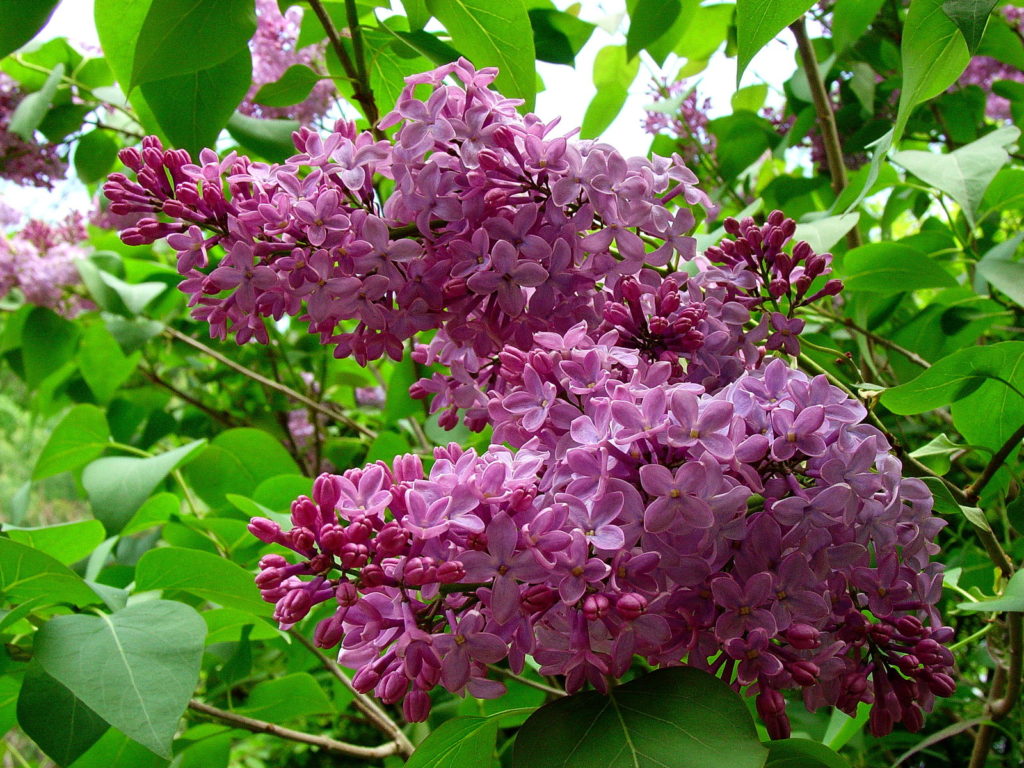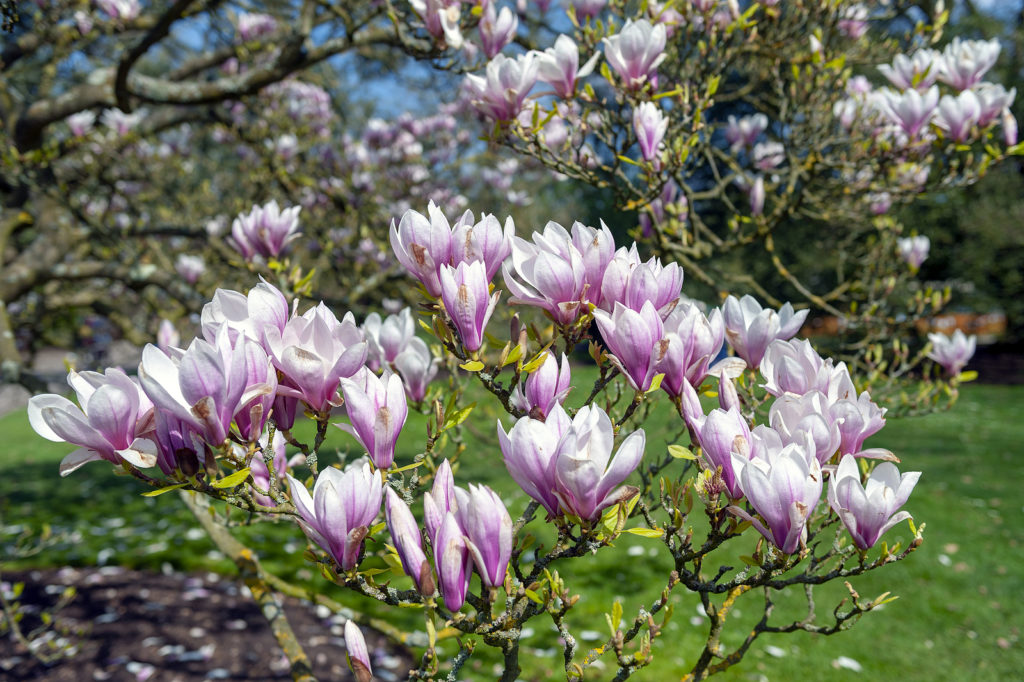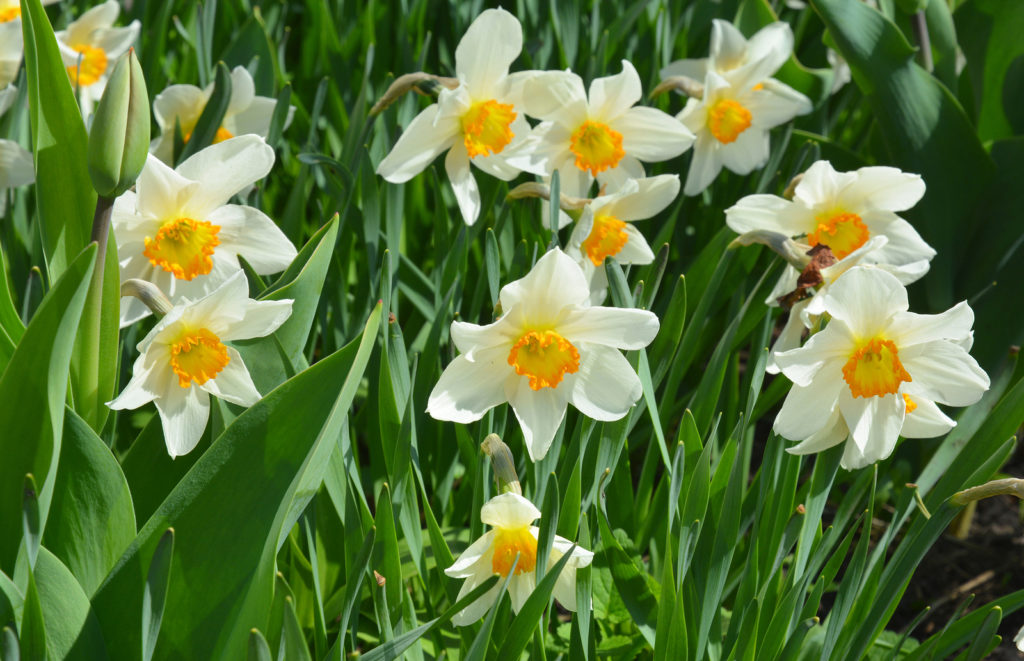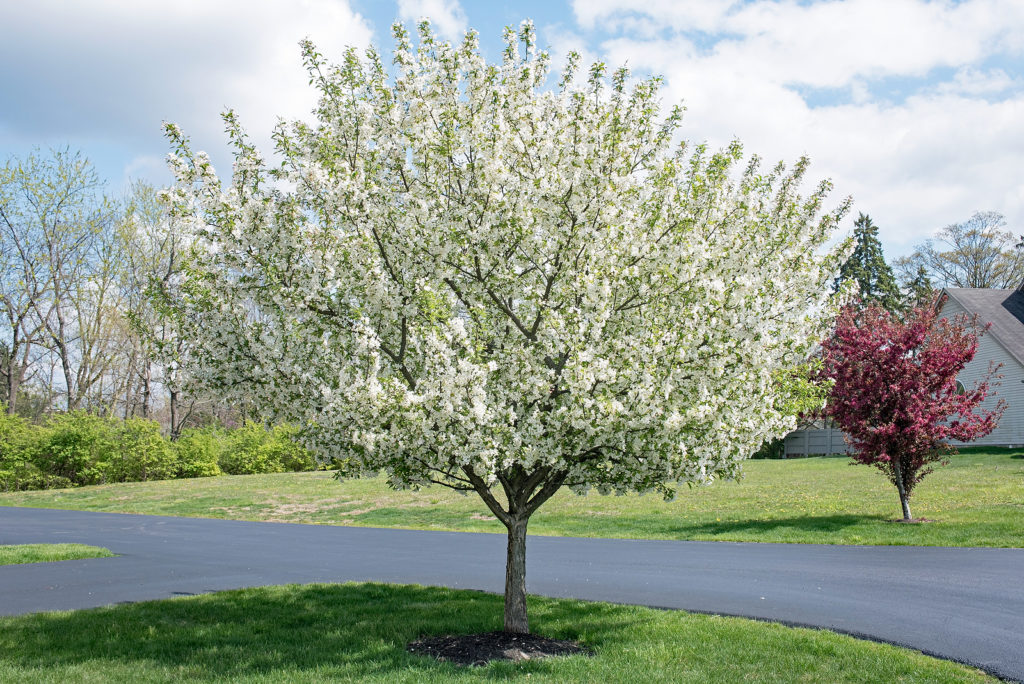Events in the natural calendar can be used to guide planting times in the vegetable garden. The study and observation of seasonal events and their correlation to plant, insect, and animal life is called phenology.
The study of regular events in the lives of plants, animals, and insects is called phenology (from Greek words meaning “science of appearances.”) Plant and animal life cycles are predictors of reoccurring events in nature.
The growth and flowering of vegetables, herbs, annuals, perennials, shrubs, and trees are determined by day length and temperature (this also applies to the lifecycle of insects and animals.
Good Products for Pest and Disease Control at Amazon:
- Garden Safe Snail and Slug Bait
- Bonide Sulfur Fungicide
- Monterey BT Caterpillar Killer
- Neem Bliss 100-% Cold Pressed Neem Oil
- Safer Brand Insect Killing Soap
- PyGanic Botanical Insecticide
You can use the bloom time of shrubs and trees to tell you when it is safe to plant vegetables in the garden. Look at blooming trees and shrubs in your garden or neighborhood as indicators of when it is safe to plant vegetables directly in the garden.
Keep a record of weather conditions in your garden. Note when trees and shrubs leaf out and bloom—record the date and soil temperature (leaf and bloom times are triggered by soil and air temperature). Do this for 3 or 4 years and you can make your own nature planting signals calendar for your garden.

Modern phenology got its start in England with the observations of naturalist Robert Marsham. Marsham began recording the connections between natural and seasonal events in 1736 and kept at it for more than 60 years. Many American universities have ongoing phenology studies underway today.
But phenology has ancient origins; one Chinese proverb says: “Spring is sooner recognized by plants than by men.”
Lilacs and bean planting
The lifecycle of the common lilac is an often-used guide in phenology studies and garden planning and planting. The leafing out and progression of lilac blooms—from bud to flower fade—can aid the vegetable gardener from year to year. For example, after years of observing the lilac, naturalists have concluded that it is safe to plant tender beans, cucumbers, and squash when the lilac is in full bloom.
Phenology generally looks at climate, weather, and temperature triggers and how they correlate to events in the plant, animal, and insect worlds.
Here is the lilac planting calendar for the vegetable garden:
- Lilac begins to leaf out: direct sow seed of cool-weather vegetables such as peas, lettuce, and spinach; direct sow cold-tolerant herbs such as parsley and chervil; direct sow hardy annuals such as calendula and sweet alyssum.
- Lilac flower spike is in full bloom: direct sow seed of basil, corn, and tomatoes; direct sow marigolds and geraniums.

Saucer magnolias and early spring
Other notable phonological events: When the saucer magnolia blooms early spring has arrived; when wild chicory blooms summer has arrived.
Vegetable planting phenology guide
- Beans: Plant beans when lilac is in full bloom, also cucumber seeds and squash seeds; direct sow when lilacs bloom.
- Broad Bean: direct sow when flowering quince, saucer magnolia, grape hyacinth, and narcissus are in full bloom.
- Beets: Plant beets when lilac is in first leaf and dandelions are in bloom, also carrots, cabbage family crops, lettuce, and spinach; direct sow when forsythia and dandelions begin to bloom.
- Broccoli: Plant broccoli when lilacs first begin to leaf out and dandelions are in bloom.
- Brussels sprouts: Plant Brussels sprouts when lilacs first begin to leaf out and dandelions are in bloom; direct sow when forsythia and dandelions begin to bloom.
- Cabbage: Plant cabbage and cabbage family crops (broccoli, Brussels sprouts, collards) when lilacs first begin to leaf out and dandelions are in bloom, also beets, carrots, lettuce, and spinach.
- Cabbage for spring: Plant spring cabbage in the fall when mock orange is in full bloom
- Carrots: Plant carrots when lilac is in first leaf and dandelions are in bloom, also beets, cabbage family crops, lettuce, and spinach; direct sow when forsythia and dandelions begin to bloom.
- Cauliflower: direct sow when flowering quince, saucer magnolia, grape hyacinth, and narcissus are in full bloom.
- Celeriac: direct sow when flowering quince, saucer magnolia, grape hyacinth, and narcissus are in full bloom.
- Celery: direct sow when flowering quince, saucer magnolia, grape hyacinth, and narcissus are in full bloom.
- Chervil: direct sow when forsythia and dandelions begin to bloom.
- Collards: Plant collards when lilacs first begin to leaf out and dandelions are in bloom.
- Corn: Plant corn when apple blossoms begin to fall and when oak leaves are the size of a squirrel’s ear; direct sow when redbuds, flowering dogwoods, flowering crabapples in bloom, and lilacs are in full bloom.
- Corn Salad: direct sow when flowering quince, saucer magnolia, grape hyacinth, and narcissus are in full bloom.
- Cucumber: Plant cucumber seeds when lilac is in full bloom and when the blooms just starting to fade, also bean seeds and squash seeds; direct sow when redbuds, flowering dogwoods, flowering crabapple are in bloom, and lilacs are in full bloom.
- Eggplant: Transplant eggplant irises bloom and daylilies start to bloom, also melons and peppers; set out plants when peony, black locust, and golden chain trees are in full bloom.
- Endive and Escarole: direct sow when forsythia and dandelions begin to bloom.
- Florence Fennel: direct sow when flowering quince, saucer magnolia, grape hyacinth, and narcissus are in full bloom.
- Hardy, cool-season spring crops: plant hardy crops when plum and peach trees are in full bloom.
- Kohlrabi: direct sow when forsythia and dandelions begin to bloom.
- Leek: direct sow when forsythia and dandelions begin to bloom.
- Lettuce: Plant lettuce, when lilac is in first leaf and dandelions, are in bloom, also beets, carrots, cabbage family crops, and spinach; direct sow when forsythia and dandelions begin to bloom.
- Lima Bean, bush: direct sow when Chinese wisteria blooms.
- Lima Bean, pole: set out plants when peony, black locust, and golden chain trees are in full bloom.
- Melons: Transplant melons when irises bloom and daylilies start to bloom, also eggplant and peppers; direct sow when redbuds, flowering dogwoods, flowering crabapple are in bloom, and lilacs are in full bloom.
- New Zealand Spinach: direct sow when Chinese wisteria blooms.
- Okra: set out plants when peony, black locust, and golden chain trees are in full bloom.
- Parsley: direct sow when forsythia and dandelions begin to bloom.
- Parsnip: direct sow when forsythia and dandelions begin to bloom.

- Peas: Plant peas when daffodils and forsythia are in full bloom; direct sow when forsythia and dandelions begin to bloom.
- Okra: set out plants when peony, black locust, and golden chain trees are in full bloom.
- Onion (sets, seed): direct sow when forsythia and dandelions begin to bloom.
- Peppers: Transplant peppers when irises bloom and daylilies start to bloom, also eggplant and melons; set out plants when peony, black locust, and golden chain trees are in full bloom.
- Potatoes: Plant potatoes when the first dandelions bloom.
- Pumpkin: direct sow when redbuds, flowering dogwoods, flowering crabapple in bloom, and lilacs are in full bloom.
- Radish: direct sow when forsythia and dandelions begin to bloom.
- Salsify: direct sow when forsythia and dandelions begin to bloom.
- Soybean: direct sow when Chinese wisteria is in bloom.
- Spinach: Plant spinach when lilac is in first leaf and dandelions are in bloom, also beets, cabbage family crops, carrots, and lettuce; direct sow when forsythia and dandelions begin to bloom.
- Sweet Potato: set out plants when peony, black locust, and golden chain trees are in full bloom.
- Swiss Chard: direct sow when forsythia and dandelions begin to bloom.
- Squash: Plant squash seeds when lilac is in full bloom and just as the blooms fade, also bean seeds and cucumber seeds; direct sow when redbuds, flowering dogwoods, flowering crabapples are in bloom, and lilacs are in full bloom.
- Tender, warm-season summer crops: Plant tender crops when you see new growth on grapes.
- Tomatillo: set out plants when peony, black locust, and golden chain trees are in full bloom.
- Tomato: set out plants when peony, black locust, and golden chain trees are in full bloom; plant tomatoes when daylilies start to bloom or lily-of-the-valley plants are in full bloom or flowering dogwood are in bloom.
- Turnip: direct sow when forsythia and dandelions begin to bloom.
- Watermelon: set out plants when peony, black locust, and golden chain trees are in full bloom.
- Zucchini: direct sow when redbuds, flowering dogwoods, flowering crabapple in bloom, and lilacs are in full bloom.
Succession plantings of crops
Make succession plantings any time after the first planting dates but keep in mind the number of days for a crop to reach maturity and the increasing or decreasing air temperature as the season progresses; i.e. cool-weather crops must come to harvest before the warm temperatures arrive in late spring or summer and warm-weather crops must mature before cool and chilly temperatures arrive in autumn.

Vegetable garden pests phenology
- Apple maggot moths are at their peak when Canada thistle blooms; protect apple fruits.
- Mexican bean beetle larvae appear when foxglove flowers open.
- Cabbage root maggots are active when wild rocket blooms.
- Japanese beetles arrive when morning glory vines begin to climb.
- Squash vine borers are at their peak when chicory blooms; protect pumpkin plants.
- Tent caterpillars are hatching when crabapple trees are in bud; begin caterpillar controls.
Notes on the bloom of lilacs
Lilacs bloom first in the west and south and then in the east and north. Naturalists have observed that most phenological events on a large scale progress from west to east and south to north. This progression is known as ‘Hopkin’s Rule” (named for U.S. Department of Agriculture entomologist Andrew Hopkins) which states that phenological events are delayed by four days per degree of north latitude and 1¼ days per degree of east longitude. But there are exceptions; in particular, altitude and topography will impact the progression of natural events.
Also of interest:
Vegetable Planting and Soil Temperature
Garden Planning Books at Amazon:
- Vegetable Garden Grower’s Guide
- Tomato Grower’s Answer Book
- Vegetable Garden Almanac & Planner
- Kitchen Garden Grower’s Guide Vegetable Encyclopedia















